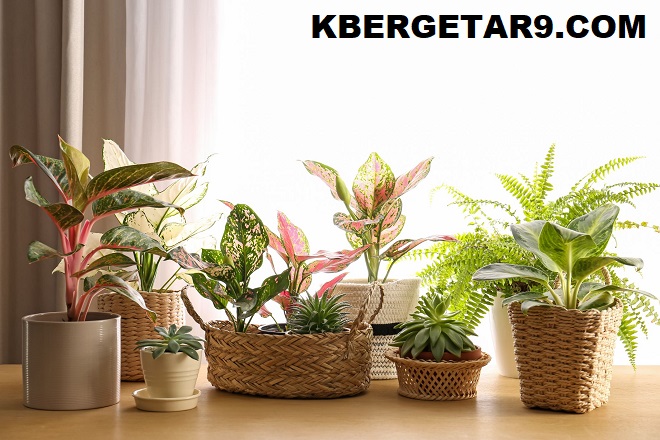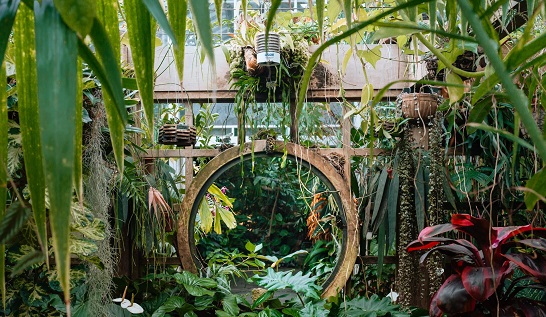Revitalize your indoor greenery with expert tips on renovating an indoor house plant. Learn how to breathe new life into your botanical beauties and create a thriving indoor oasis.
Renovating an Indoor House Plant is not just about nurturing a plant; it’s about reviving a piece of nature within your home. As plants grow, they may require various interventions to maintain their health and vibrancy. Whether it’s repotting, pruning, or troubleshooting common issues, knowing how to renovate your indoor house plant is essential for ensuring its longevity and beauty.
In this comprehensive guide, we’ll delve into every aspect of renovating an indoor house plant, covering everything from assessing plant health to executing rejuvenating techniques. Let’s embark on a journey to transform your indoor space into a lush haven of greenery!
Introduction: Embracing the Green Revival
Renovating an indoor house plant is akin to giving your home a fresh breath of air. As we spend more time indoors, cultivating a green sanctuary becomes paramount for our well-being. However, maintaining indoor plants requires more than just occasional watering; it demands attention to detail and a nurturing touch. In this guide, we’ll explore the art of plant renovation, equipping you with the knowledge and skills to elevate your indoor gardening experience.
Assessing Plant Health: Understanding the Signs
Before embarking on any renovation endeavor, it’s crucial to assess the health of your indoor plants. Signs of distress such as wilting leaves, yellowing foliage, or stunted growth indicate underlying issues that need to be addressed promptly. By closely examining your plant’s condition, you can pinpoint the root cause of its decline and devise an appropriate renovation plan.
Identifying Common Problems: Troubleshooting Guide
From overwatering to pest infestations, indoor plants face a myriad of challenges that can hinder their growth. By familiarizing yourself with common plant problems, you can preemptively address issues before they escalate. This section will delve into the most prevalent issues faced by indoor plants and provide practical solutions for mitigating them.

Overcoming Watering Woes: Finding the Right Balance
Watering is a fundamental aspect of plant care, but it’s also a common source of problems. Overwatering can lead to root rot and fungal diseases, while underwatering can result in dehydration and wilting. Finding the delicate balance between moisture and drainage is essential for maintaining optimal plant health.
Practical Tips for Repotting: Nurturing Growth
Repotting is a rite of passage for indoor plants, signaling their transition to a larger home. However, improper repotting techniques can cause stress to the plant and impede its growth. This section will guide you through the repotting process, offering step-by-step instructions and insights on selecting the right potting mix.
Reviving Through Pruning: Trimming for Success
Pruning is a transformative practice that rejuvenates indoor plants and stimulates new growth. By strategically trimming away dead or overgrown foliage, you can encourage healthier, more robust plants. This section will explore the art of pruning, highlighting the benefits and techniques for achieving optimal results.
Creating an Optimal Environment: Cultivating a Green Haven
In addition to proper care and maintenance, creating an optimal environment is essential for fostering plant growth. Factors such as lighting, humidity, and temperature play a crucial role in the well-being of indoor plants. By optimizing these environmental conditions, you can create an idyllic setting for your botanical companions to thrive.
Harnessing Natural Light: Maximizing Plant Potential
Light is the lifeblood of plants, driving photosynthesis and fueling their growth. However, not all light is created equal, and understanding your plant’s lighting needs is key to its survival. This section will delve into the intricacies of light exposure, offering insights on placement and supplementation for various plant species.
Humidity Hacks: Maintaining Moisture Balance
Humidity levels can significantly impact plant health, especially in dry indoor environments. While some plants thrive in arid conditions, others require higher humidity to flourish. This section will explore practical strategies for increasing humidity levels and creating a microclimate that mimics a plant’s natural habitat.
Temperature Control: Keeping Plants Comfortable
Temperature fluctuations can stress indoor plants and disrupt their growth cycles. Maintaining a consistent temperature range is essential for promoting overall plant health and resilience. This section will discuss optimal temperature ranges for indoor plants and offer tips for regulating temperatures in your home.
Renovating an Indoor House Plant: A Labor of Love
Renovating an indoor house plant is more than just a chore; it’s a labor of love that yields rewarding results. By nurturing your plants with care and attention, you can transform your indoor space into a verdant oasis of beauty and tranquility. Remember, every leaf you prune and every drop of water you provide contributes to the growth and vitality of your botanical companions. So roll up your sleeves, grab your pruning shears, and embark on a journey of green renewal!

FAQs (Frequently Asked Questions)
- How often should I water my indoor plants?
- The frequency of watering depends on various factors such as plant species, pot size, and environmental conditions. Generally, it’s best to water when the top inch of soil feels dry to the touch.
- What are some signs that my plant needs repotting?
- Signs that your plant may need repotting include roots protruding from the drainage holes, soil drying out quickly, or the plant becoming root-bound.
- How can I prevent overwatering my indoor plants?
- To prevent overwatering, ensure proper drainage by using pots with drainage holes, and water your plants only when necessary. Additionally, avoid leaving plants sitting in water-filled saucers.
- What are the benefits of pruning indoor plants?
- Pruning promotes healthy growth by removing dead or diseased foliage, improving airflow, and shaping the plant’s appearance. It also encourages the development of new shoots and branches.
- Can I use tap water to water my indoor plants?
- While tap water is generally safe for most plants, it may contain chemicals such as chlorine and fluoride that can harm sensitive plants. Consider using filtered or distilled water for optimal plant health.
- How can I increase humidity for my indoor plants without a humidifier?
- You can increase humidity levels by placing a shallow tray filled with water and pebbles near your plants, grouping plants together to create a microclimate, or misting them regularly with a spray bottle.
Conclusion: Nurturing Nature Within
Renovating an indoor house plant is a journey of nurturing and renewal, where every action taken contributes to the well-being of your botanical companions. By assessing plant health, troubleshooting common problems, and creating an optimal environment, you can cultivate a thriving indoor oasis that brings joy and tranquility to your home. So embrace the green revival and embark on a transformative journey of plant renovation today!


